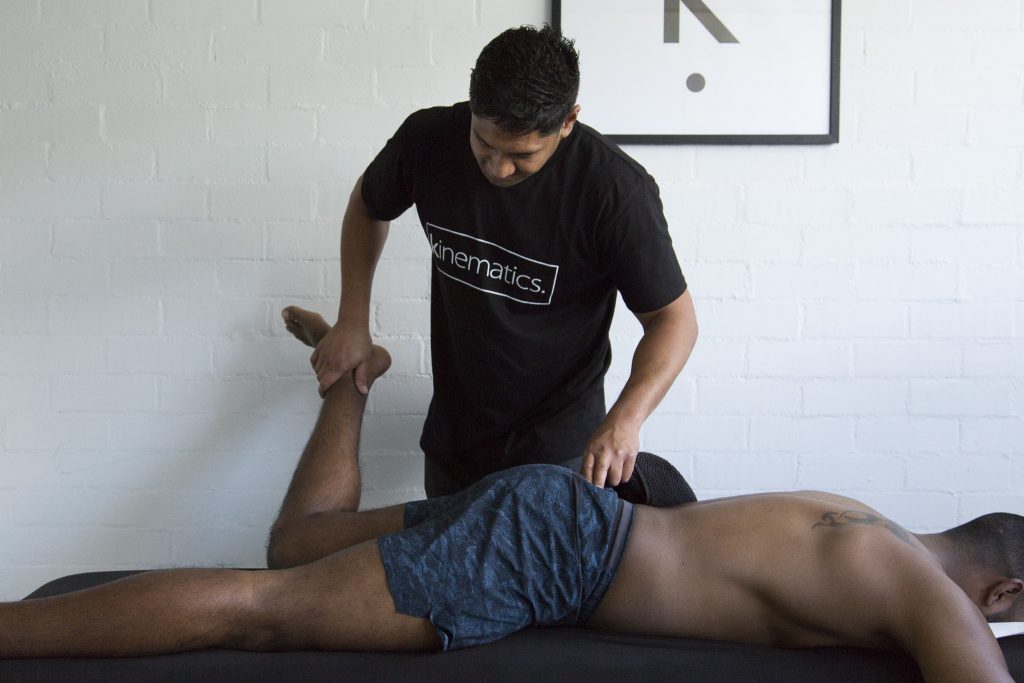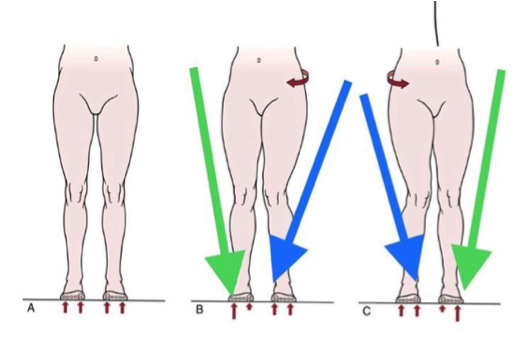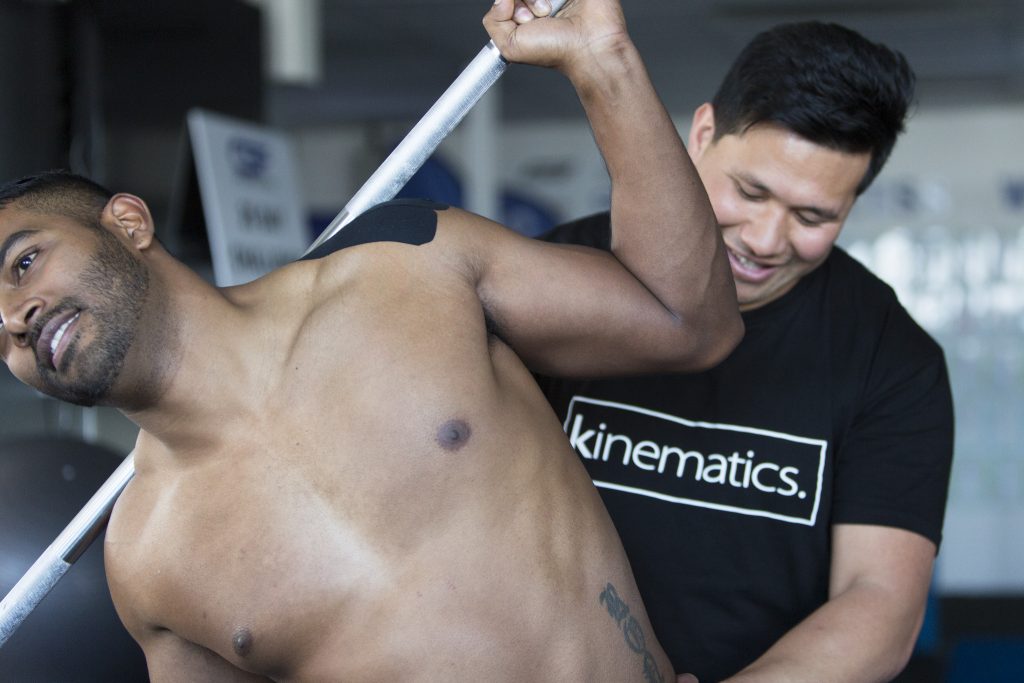Addressing plantar fasciitis by correcting pelvic alignment.
August 28thI’ve spent the last 10 years working in various sporting and private practice clinics, and “plantar fasciitis” is one of the most common complaints. At Kinematics we treat this condition (along with many other causes of heel pain) by looking well beyond the foot and applying the principles of biomechanics.

The plantar fascia is a fibrous connective tissue that creates the arch of the foot by stretching from the heel bone to the start of the toes. It plays a crucial role in shock absorption and the biomechanics of the foot during gait. Plantar fasciitis is an inflammation of the plantar fascia and is caused by excessive load and overuse of the tissue.
Plantar fasciitis is treated by clinicians like a tendinopathy, which involves carrying out a gradual loading exercise program. However, if the biomechanical factors causing the overloading of the fascia in the first place are not addressed, the pain will likely persist or reoccur once the client tries to return to or increase activity.
One of the most common contributing areas that I believe can lead to plantar fascia overloading is dysfunctional positioning of the pelvis. The pelvis is what connects the spine to the thigh bones, and when out of alignment can have a huge impact on posture and loading patterns of the body above and below it. Therefore by correcting alignment and the forces acting on the pelvis, it makes sense that there can be improvements to the mechanics of the foot and consequently a reduction of loading on the plantar fascia.
Examples of what can influence pelvic alignment:
- Sitting for long periods/inactivity
- Weak muscles of the trunk
- Weak posterior chain muscles
- Compensation from another injury
- Compensation for muscle weakness/imbalances
- Poor form when training
- Footwear
Over a period of time, pelvic malalignment can affect your overall posture. One of the most commonly adapted postural positions humans fall into involves an anterior tilt of the pelvis, flexion through the upper back and a forward shift of the head. The glute and posterior chain muscles do not fire effectively in this poor postural position. Therefore, in order for the body to still be propelled forwards when walking or running, compensations have to occur elsewhere in the body.
When analysing how people with poor posture walk and run, the most prevalent compensation I see is excessive trunk rotation. This increased rotational force in the trunk often results in a wider foot stance and longer stride length to try and stabilise the pelvis. This altered gait pattern places increased load through the lower limbs.

*Diagram 1: A. represents neutral posture; B. represents a shift in the left pelvis; C. represents a shift in the right pelvis.
Another common adapted pelvic malalignment is a rotational shift. In the above diagrams, you can see the effects of what a rotational shift can have on the positioning of the lower limbs in weight bearing. If this is how much of an impact a rotational shift can have in weight bearing, you can imagine how many compensations occur when walking or running.
What else can contribute to developing plantar fasciitis:
- Poor Footwear
- Activity change or increase in training load
- Excessive activity
- Pregnancy
- Being overweight
- 40+ age group
- Muscle weakness and tightness
- Reduced shoulder and thoracic mobility
- Reduced mobility of the foot and ankle
- Other dysfunctional biomechanics
It is also important to acknowledge if there are other contributing factors including congenital, trauma, scoliosis and leg length discrepancy (structural and functional). Although some of these factors may not be able to be entirely addressed, understanding them can give an indication of how best to minimise other contributing loading factors on the heel.

Treatment
Following a biomechanical assessment to identify why the plantar fascia is being overloaded, we use various treatment techniques to correct alignment and imbalances. These may include:
- Deep tissue release work
- Dry needling
- Footwear modification
- Postural taping
- Exercise rehab to improve pelvic stability and efficiency of gait
- Working alongside other relevant practitioners
Plantar fasciitis is one of the most common diagnoses given for heel pain. It is often presumed or self-diagnosed based purely off the location of pain, without any medical knowledge or physical examination. There are many other structures in the foot (and above) that can also cause heel pain and need to be considered before making a diagnosis.
Other possible causes of heel pain:
- Calcaneal fat pad impingement
- Calcaneal stress fracture
- Calcaneal spur
- Locked navicular
- Cuboid subluxation
- Achilles tendinopathy
- Abductor hallucis strain
- Locked talus
- Intrinsic foot and lower leg muscles
- Nerve pain

Understanding the structure and the contributing factors that are causing your symptoms are important as it gives you a much better understanding as to why you are experiencing them and what you can do to reduce and ultimately eliminate them.
I believe it is important that the general population (and not just elite athletes) have access to this style of progressive health care. At Kinematics, we make sure our biomechanical services are accessible to clients of all ages and athletic ability. We aim to provide long-term solutions by taking a look at the body from a well-rounded perspective. This approach enhances injury management, injury prevention, and overall performance and enables clients to not only have their presenting complaints addressed but also the underlying issues.
So if you’re looking for a different approach to fixing your heel pain (or any other pain for that matter), come in and see the team at Kinematics!

